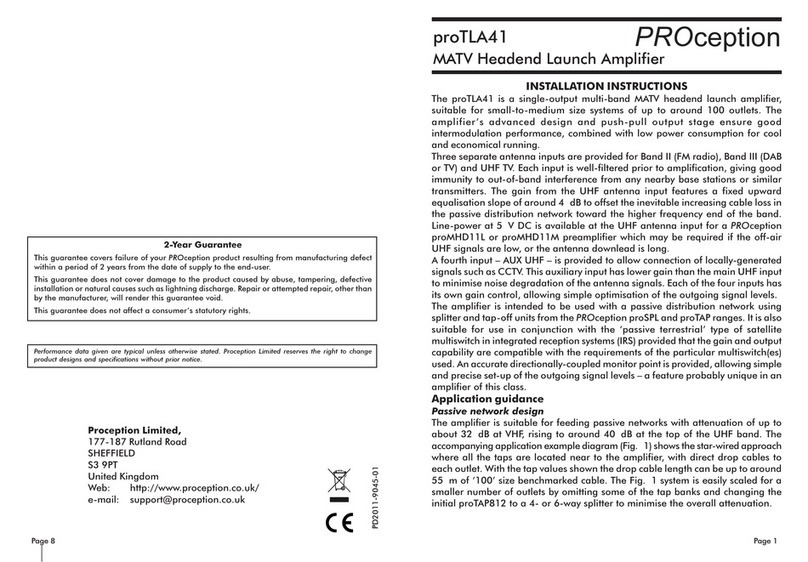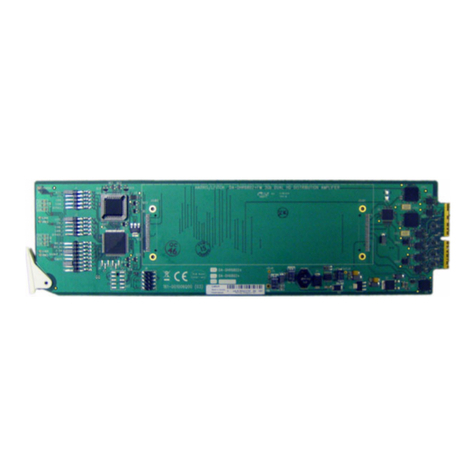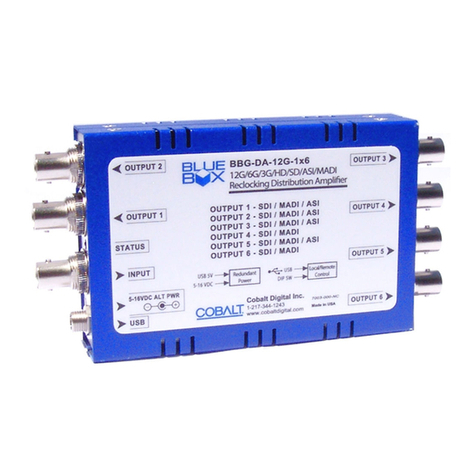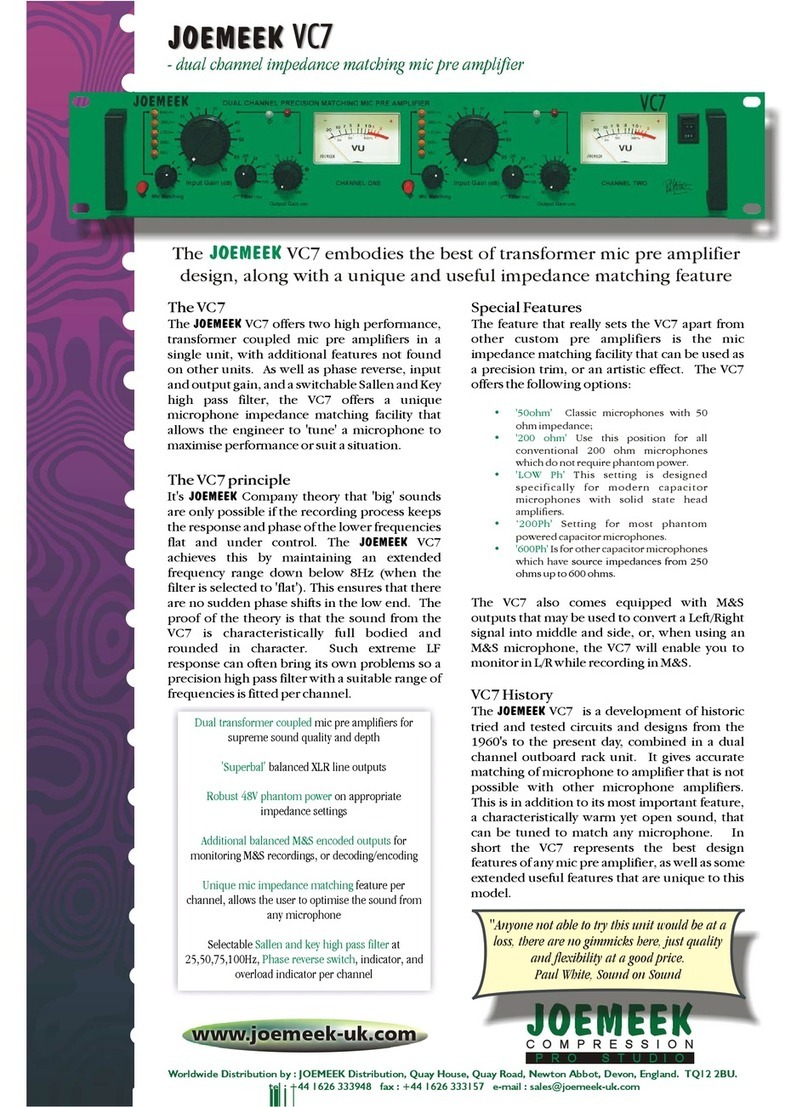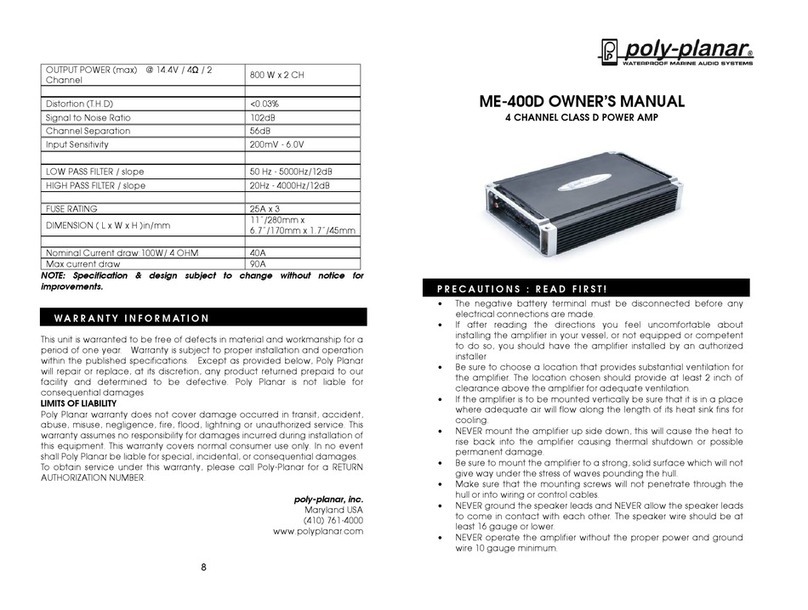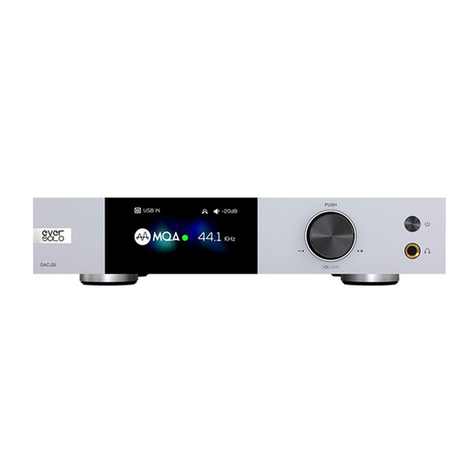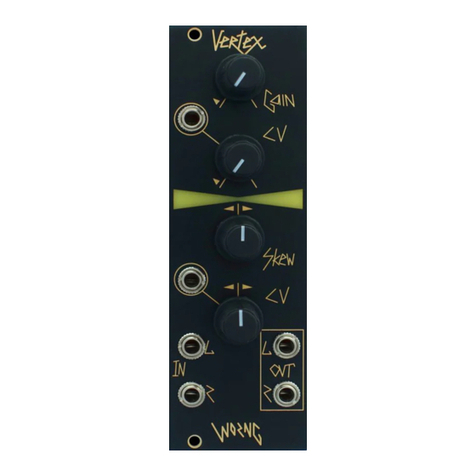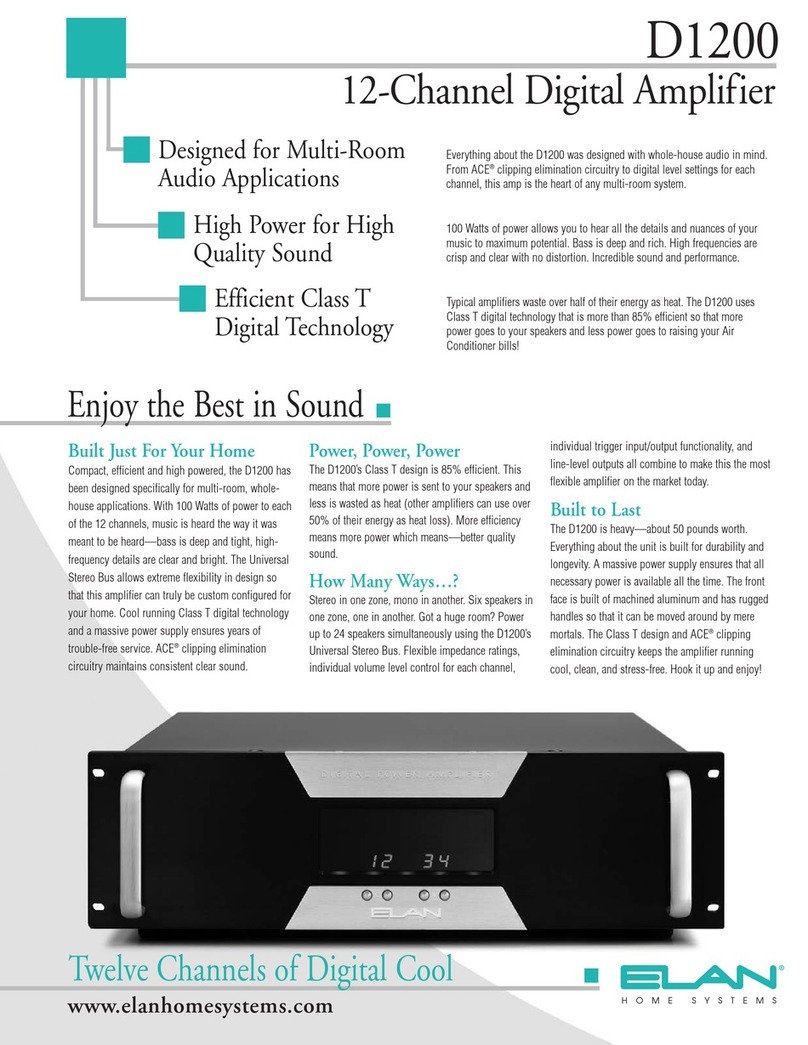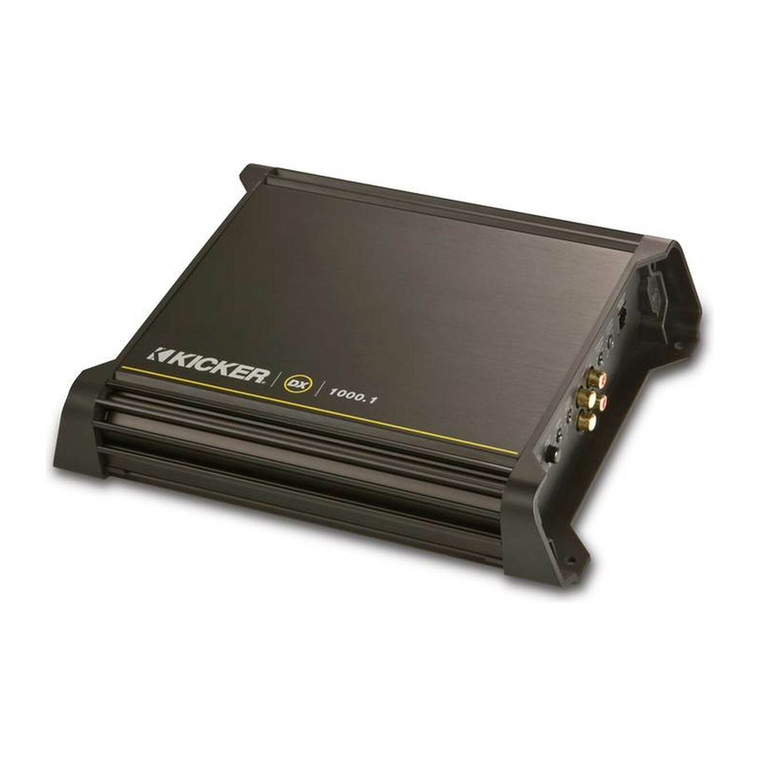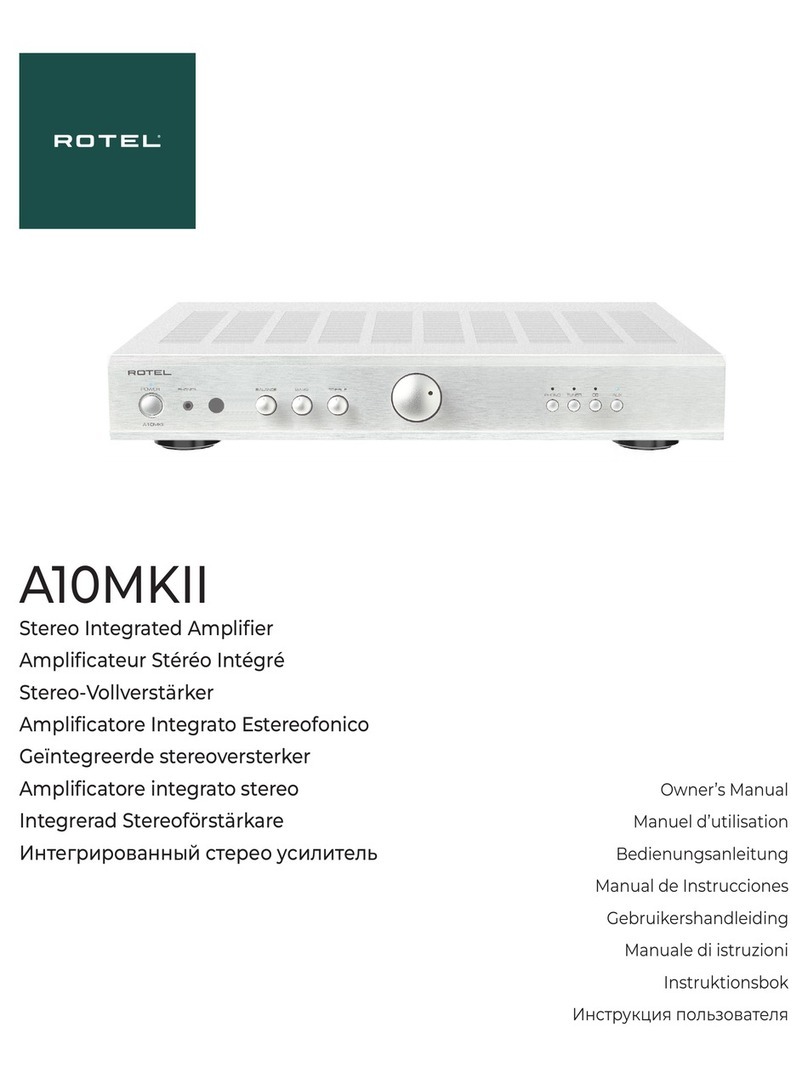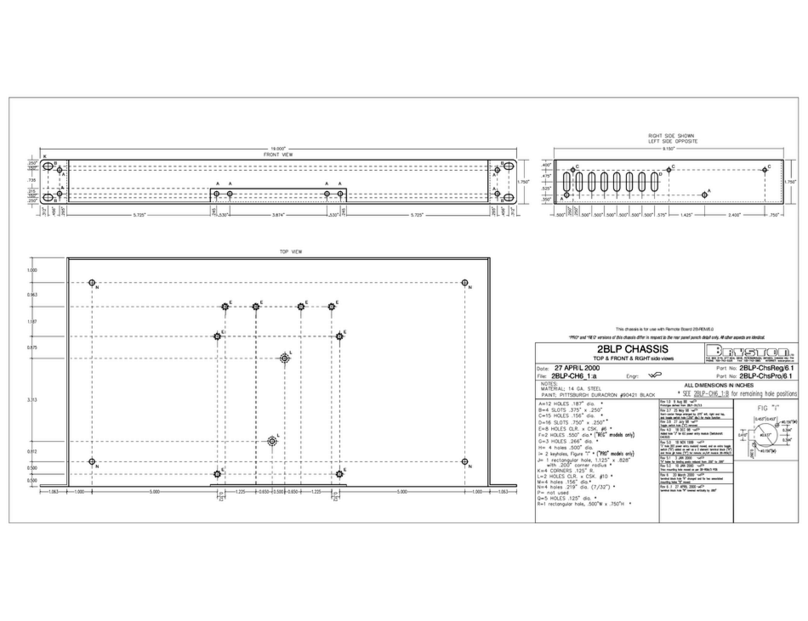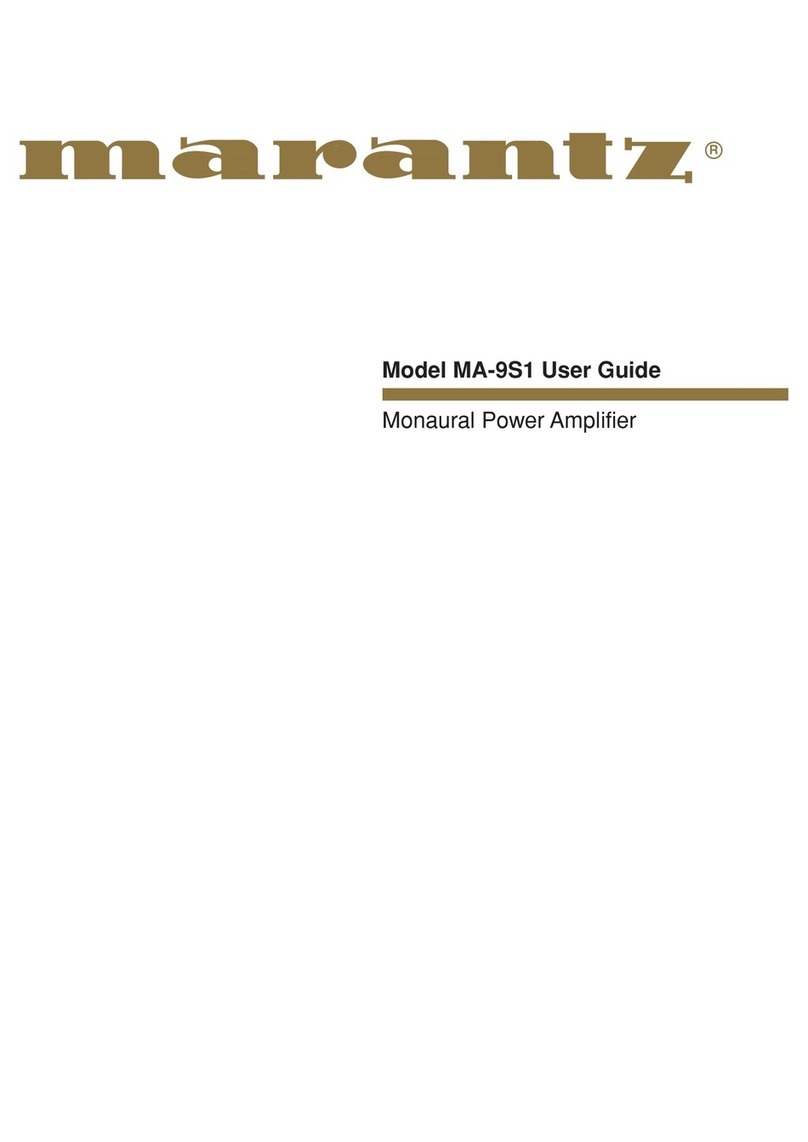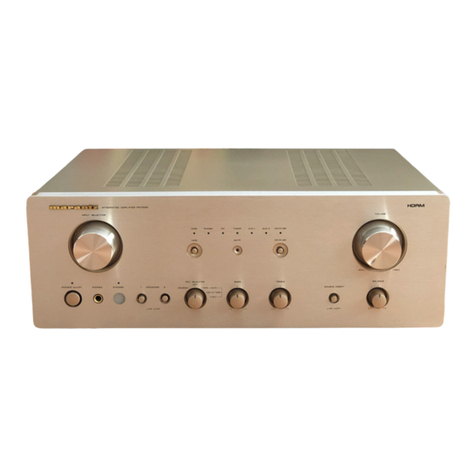PROception PROAMP310X User manual

PD2011-9031-03
2 Year Guarantee
This guarantee covers failure of your PROcepon product resulng from manufacturing defect within a
period of 2 years from the date of supply to the end-user. This guarantee does not cover damage to the
product caused by abuse, tampering, defecve installaon or natural causes such as lightning discharge.
Repair or aempted repair, other than by the manufacturer, will render this guarantee void. This
guarantee does not aect a consumer's statutory rights.
Performance data given are typical unless otherwise stated. We reserve the right to change
product designs and specicaons without prior noce.
EU Declaraon of Conformity
Blake UK hereby declares that the radio equipment type PROAMP310X is in compliance with Direcve
2014/53/EU.
The full text of the EU declaraon of conformity is available at the following internet
address: www.blake-uk.com/DoC
Other Ranges of Products & Services from Blake UK, PROcepon & CappSure...
Website: www.procepon.co.uk
Email: support@procepon.co.uk
©Blake-UK 2018 All rights reserved E&OE Product Specicaon may be Changed without Prior Noce
• TV, Wi-Fi & 4G Aerials www.blake-uk.com/aerials
• Brackets & Installaon Equipment www.blake-uk.com/bracketspoles
• AV TV Wall Mounts www.blake-uk.com/tvbrackets
•CappSure Wi-Fi IP Cameras www.blake-uk.com/cappsure
• Coaxial Connectors & Adaptors www.blake-uk.com/procon
• RF Signal Distribuon www.blake-uk.com/rfsignal
• HDMI Signal Distribuon www.blake-uk.com/hdmi
•LTE Filtering Products www.blake-uk.com/lte
•Satellite Mounts www.blake-uk.com/satmount
•Bespoke Manufacturing www.blake-uk.com/bespoke
•UK R&D www.blake-uk.com/researchdevelop
This versale product is an addion to the PROcepon range of mul-way distribuon ampliers. The
unit has two modes of operaon, allowing it to be used either as a straighorward 10-way aerial
amplier for o-air signal distribuon, or as a return-path amplier with its UHF input fed from the loop
through output (RF OUT-2) of a Sky* satellite receiver or similar device. In its return-path mode full
support is provided for remote infrared receivers (eyes). The use of F connectors makes the amplier
easy to install and helps to ensure good system screening.
All these ampliers are compliant with the Radio Equipment Direcve 2014/53/EU and meet the
harmonised standard EN 303 354 for Class 0. As such they work on ALL current UK DTT channels
including channel 60, are resilient to interference and overloading, and cope with mulple carriers. In
cases of strong LTE interference a separate 4G lter should be ed. These are supplied free by at800,
or higher performance models can be purchased from www.blake-uk.com. (To pass channels up to and
including channel 59 use PROLTE1/59, or if channels 58 and 59 are not required, use PROLTE1/57).
Features:
• Separate ltered inputs for the FM radio, DAB (Band III) and UHF TV frequency bands.
• Ten independent outputs.
• Dual-mode operaon: standard signal distribuon amplier; or return-path amplier.
• Flexible powering opons: local or remote power supply locaon.
• Automac mode selecon with 2-colour LED mode and power indicator:
Green - Mode 1, Orange - Mode 2, Red - Power.
• Bandpass lters on VHF inputs. UHF input ltered below 470 MHz to reduce risk of interference
from CB, private mobile radio, TETRA, etc.
• Line-power for preamplier available at UHF input.
• Suitable for both digital and analogue applicaons, fully DDT-compable.
• Channels 61-68 can be used for locally modulated signals.
Mode 1 aerial amplier mode (green LED): in this mode the unit funcons as a straighorward mul-
way amplier for distribuon of o-air and/or locally generated RF signals around a building. The input
signals will usually come directly from the corresponding aerials. Line-power (5V) for a masthead or
similar preamplier is available at the UHF input in this mode.
Powering Opons
Line-power for this amplier (12—15V DC) can be supplied via any of the ten outputs. Alternavely, if a
mains supply is available near the amplier, a suitable local AC/DC mains power adaptor may be used
instead of line-powering.
In Mode 1, no power is passed to unpowered outputs and the return-path amplier and remote control
funcons are completely disabled.
Note (Mode 1): this amplier is not suitable for powering from the aerial sockets of DVB-T (DTT or Freeview†)
receivers. The voltage and current available from such receivers (usually 5V at 30mA) are insucient.
Fig.1(a) shows a typical Mode 1 applicaon with power provided by a PROPSU112X power unit
connected in one of the output lines.
Fig.1(b) shows a similar installaon to Fig.1(a), except that a PROMHD11L masthead preamplier is
used to boost the UHF input signals and power is provided by an AC/DC power adaptor adjacent to the
amplier. This diagram also shows how one or more of the output lines can be split to provide
addional outlet points.
* Sky and Sky+ are registered trademarks of Brish Sky Broadcasng Group PLC.
Freeview is a registered trademark of DTV Services Ltd.
PROAMP310X www.blake-uk.com/310x
Dual-mode 10-way 3-band amplier Instrucon Manual

Fig.1(a) example Mode 1 applicaon with remote power unit.
Fig.1(b) example Mode 1 applicaon with local power unit and showing oponal use of UHF preamplier
and output splier
Preamplier Power Opon
Line-power for a masthead or similar preamplier is available at the UHF input in Mode 1. The
amplier provides approximately 5V with a current rang of 30mA max., suitable for powering a
PROcepon PROMHD11L or PROMHD11M preamplier. If using other ampliers, take care to
ensure that the current rang is not exceeded. Use a preamplier only when the UHF input signals
would otherwise be too low in level—i.e. where the signal levels from the aerial are low, or where
there is an unusually long cable run between the aerial and the PROAMP310X amplier. Always use
the minimum amount of preamplier gain necessary to obtain sasfactory signal levels at the
amplier input.
Preamplier power is normally present at the UHF input, but will shut down if the aerial presents a
short-circuit at the input. Note that this shut-down is not self-reseng. If preamplier power is
wanted, but has been shut-down by a temporary short circuit, it must be reset manually by
removing power to the amplier for a few seconds. If necessary, preamplier power can be
permanently disabled by means of an internal jumper (see “Advanced conguraon features” on
page 7).
Addional UHF sources
Any addional UHF signal sources such as CCTV camera channels should be combined with the
aerial signal feed ahead of the PROAMP310X. This is done best using equipment providing a
buered loop-through arrangement (e.g. the PROcepon PROMOD1 video and audio modulator) or
by the use of suitable combining lters. The pracce of using wideband combiners is discouraged
since it can degrade signal-to-noise raos and can cause locally generated signals to be radiated
from the aerial, possibly causing interference to other viewers.
Note: where auxiliary equipment connected to the UHF input might be aected or jumper facility menoned in
the previous secon.

Notes
1. UHF signal handling capability is given for 5 analogue TV channels plus up to 6 DTT
multiplexes at ≤ -14 dB relative level.
2. The first (higher) figure is for analogue signals and the second (lower) is for digital (16– or
64-QAM).
3. Rejection figures are given relative to the nominal passband gain.
4. Absolute minimum voltage, measured to the bottom of the ripple present.
5. Highest recommended mean voltage for operation over the full temperature range.
6. Eye load should be restricted to 80 mA or less when using PROPSU112X power unit (see
text).
7. Both UHF preamp and IR eye power outputs have fold-back short-circuit protection, but not
overload protection. It is the installer’s responsibility to ensure that the stated current
ratings are not exceeded.
Certain features of this amplifier are the subject of UK patent application GB 2425443.
RF characteriscs FM ANT input DAB ANT input UHF input
Signal frequency range 87.5 .. 108 MHz 210.5 .. 230 MHz 470 .. 862 MHz
Forward gain 1.5 dB 4 dB 4.5 dB
Return path gain - - 3 dB (Mode 2 only)
Noise gure, typical 4 dB 3.5 dB 2.5 dB
Output capability - - 82 dBμV
Recommended
input signal levels
Maximum 70 dBμV70 dBμV78/63 dBμV2
Minimum 50 dBμV30 dBμV58/43 dBμV2
Isolaon between outputs ≥ 30 dB ≥ 27 dB ≥ 24 dB
Input lter rejecon3
for the frequencies (f) stated
≥ 18 dB,
f ≤ 72 MHz, f ≥ 150 MHz
≥ 22 dB, f ≤ 145
MHz, f ≥ 305 MHz
≥ 26 dB,
f ≤ 400 MHz
Power requirements Mode 1 Mode 2
DC power: voltage limits 8.5 .. 18 V 10.5 .. 18 V
Current loading Amplier only 80 mA 120 mA
Full system 110 mA (incl. 30 mA preamplier load) 220 mA (incl. 100 mA total 'eye' load)
External power outputs7UHF preamp: 5V approx. at 30 mA
max.
IR 'eye': 9V approx. at 10 mA max.
(x10)
General characteriscs
Signal connector type Type-F (IEC 60169-24)
Operang temperature range . -10 .. +40°C
Technical Data proAMP310X
Fig.2(a) - example Mode 2 applicaon with remote power unit.
Mode 2 return-path mode (orange LED): this mode is applicable when using RF OUT-2 of a Sky
satellite receiver, PVR or a similar device. This will then allow remote infrared receiver eyes (such as
the PROcepon PROSAT1EYE Mk 2) to communicate with the Sky box, so that the Sky receiver can
be controlled from a remote viewing locaon.
Powering
Mode 2 is automacally enabled when the amplier detects the presence of 9V (or higher) DC at its
UHF input (see the following secon for further details). In this mode the LED indictor changes from
green to orange and a voltage (approx. 9 V DC) is present at each output for powering a remote
infrared receiver.
Infrared receiver power is individually short-circuit protected, so that a DC short at any output will
not aect operaon of remote control via other outputs.
Fig.2(a) shows a typical Mode 2 applicaon with power provided by a PROPSU112X power unit
connected in the UHF return feed from the Sky receiver.
Fig.2(b) shows a similar installaon to Fig.2(a), except that power is provided by an AC/DC mains
power adaptor adjacent to the amplier.
Magic Infra-Red Eye Count
When using the remote powering opon with the PROPSU112X the total number of infrared ‘eyes’
on the system may need to be restricted. The PROPSU112X is rated to supply a maximum of 200mA
and approximately 120mA is drawn by the amplier itself. Thus the total ‘eye load’ is limited to
80mA. This means that a maximum of eight ‘industry-standard eyes’ (each consuming about 10mA)
may be connected to the amplier outputs. This restricon is removed if the PROcepon
PROSAT1EYE Mk 2 eye is used, since this consumes less than 5mA. Up to 10 eyes may be connected
without restricon when using the PROPSA125 AC/DC mains power adaptor.
Fig.2(a) - example Mode 2 applicaon with remote power unit.

General Instrucons for both Mode 1 & 2
Signal Connecons
To preserve RF screening integrity, the signal connecons to the amplier should be made using
good quality coaxial cable and connectors. This is parcularly important with DTT to minimise the
ingress of impulsive electrical interference. The use of cable benchmarked under the CAI scheme
is recommended.
Crimp F connectors, used in accordance with the manufacturer’s instrucons, will give the best
results. The importance of achieving the sound braid connecons cannot be over-stressed.
Connectors should be ghtened with a spanner, not le nger-ght. Unused inputs and outputs of
this amplier do not need to be terminated.
Power Supplies
• PROPSU112X - 12V power unit connected anywhere in the UHF return feed (i.e. in the line
between RF OUT-2 of the Sky receiver and the amplier’s UHF input) Fig.2(a);
• PROPSA125 - a local AC/DC mains power adaptor connected to the DC power port, as in Fig.2
(b). The adaptor doesn't need to be regulated but does needs to have a standard 2.1mm DC
connector with the correct polarity (centre pin +ve). If a 3rd party adaptor is to be used its
output should conform to the requirements given in the technical data secon (page 8).
When using this opon the UHF input must be directly connected to the Sky receiver RF OUT-
2, since the 9V second outlet power needs to be sensed at the UHF input to switch the
amplier to Mode 2. The current drawn from the Sky receiver in this conguraon is very
small (typically 3-5mA).
Mains Power Supply
Any xed wiring installed to supply power for this amplier should comply with BS7671 (IEE wiring
regulaons) and, where relevant, Part P of the building regulaons. Refer to the instrucons
provided with the power supply unit for other safety informaon.
Spling outputs
As with any mul-way amplier the output signals can be split as illustrated in Fig1(b) to provide
addional outlet points. The PROcepon PROSPL204 splier is suitable for this in Mode 1 and
introduces approximately 4dB inseron loss. Spling outputs in Mode 2 is not recommended,
since it is not possible to provide individually protected eye power to the split outputs.
Signal levels
This amplier has relavely low forward gain gures and assumes that adequate input signal levels
will be available from properly installed aerials. The amplier gains are sucient to compensate
for addional distribuon cable losses in a typical domesc-scale systems whilst avoiding the
intermodulaon and other overload problems which result from the use of excessive gain.
Recommended minimum and maximum signal levels for each of the frequency bands are given in
the Technical data secon on page 8. Parcular aenon should be paid to the input VHF radio
signal levels. In city areas, very strong signals are oen received and it may be necessary to use
aenuators on one or both of the VHF inputs to avoid overloading the amplier.
Outlet plates
The use of outlet plates is recommended to provide a professional standard of nish to the
distribuon system. PROcepon’s screened outlet plates are recommended for use with this
amplier. The diplexed TV and radio plate (PROOUT12C) allows both TV and radio equipment to
be connected simultaneously to an outlet point. Single outlets (PROOUT11C) may also used and
will allow either TV or radio equipment to be used. The system diagrams in Fig.1&2 show both
types of plate in use.
In Mode 2, a PROOUT11C plate may also be used to provide the UHF return input connecon from
the Sky receiver, as illustrated in the diagrams in Fig.2.
Installaon locaon and xing
Choose a locaon for the amplier which is dry and not subject to prolonged ambient temperature
condions of less than -10°C of more than +40°C. Fix the unit to a sound vercal surface such as a wall
or equipment mounng board. Venlaon gaps of at least 50mm should be le around the front and
all sides of the unit. More clearance will be required around sides where cables are connected.
Do not install the amplier or its associated power unit where they may become smothered with
curtains or other so furnishing fabrics. When installing the amplier and power unit in a roof space,
ensure that they will not come into contact with thermal insulaon material.
System Equipotenal Bonding
A bonding terminal is provided on the amplier for use where necessary. Distribuon systems
supplying signals to more than one household should comply with he safety requirements of BS EN
60728-11. This eecvely requires earthed equipotenal bonding of the system. The use of isolated
outlet plates is no longer recommended since they compromise screening integrity and allow ingress of
interference.
Advanced Conguraon Features
Note: access to the features described in this secon involves opening the unit. The procedures below should only be carried out by a
competent person, preferably under workshop condions.
• UHF input line-power (preamplier power): where equipment (such as an aenuator) connected
to the UHF input might be damaged by the presence of the 5V output, or may cause the 30mA
current rang to be exceeded, the input line-power can be permanently disabled by removing the
internal LINE-POWER jumper.
• Forced Mode 2 operaon: where Mode 2 operaon is desire, but it is impraccable to connect a
Sky receiver directly to the UHF input to provide a 9V sense voltage. The unit can be forced into
Mode 2 by placing a jumper link on the 2-pin header labelled FORCE MODE 2. Since UHF input line
-power will not usually be required in Mode 2, the exisng LINE-POWER jumper can simply be
moved to the FORCE MODE 2 header posion. Forced Mode 2 operaon is only relevant when a
local power unit is in use, connected to the DC power port.
• Access: to open the unit remove the four corner screws from the rear cover. Separate the two
halves of the moulded cover and withdraw the screened amplier assembly, together with the
aached DC port connector. Remove the top metal lid (this is the side with the LED). One side of
the PCB is now exposed. Take great care not to disturb any of the coils, as this could de-tune the
input lters. The LINE-POWER jumper is located just above the LED; the Force MODE 2 jumper is
in the boom right-hand corner of the board, near the equipotenal bonding terminal.
• Re-assembly: when reassembling the unit, take care to ensure that the LED does not become
trapped and pushed inside the unit, and that the DC port connector is correctly seated in the
cover mouldings before replacing the screws.
Set-Up
The Sky receiver should be congured in its INSTALLER SET-UP menu to provide power on RF OUT-2.
On the Sky handset press SERVICES, 4, 0, 1, SELECT, then select the SECOND OUTLET POWER SUPPLY
opon. Set this to be ON (the default state is OFF), SAVE SETTINGS and BACK UP out of the menu.
Interlock funcon: if a connector is present in the amplier's local DC power port then power will not
be accepted via the UHF input, regardless of whether the AC/DC mains power adaptor is actually
providing power. This is an interlock funcon which prevents the Sky receiver trying to power the
enre distribuon system in the event of failure of, or loss or power to, the local power adaptor.
Important note: this amplier is not suitable for powering directly from a Sky receiver. The
conguraon where the Sky receiver's RF OUT-2 is directly connected to the amplier's UHF input
without a local mains power adaptor present is not permied.
Other PROception Amplifier manuals
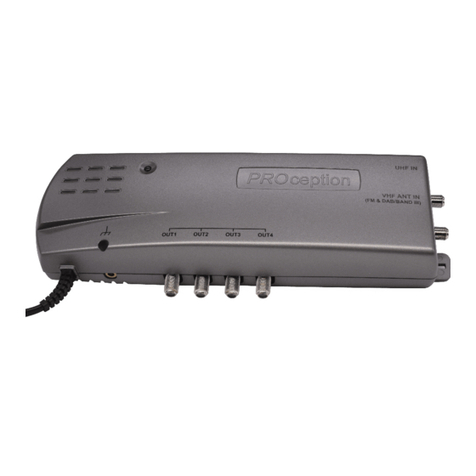
PROception
PROception proAMP24 Mk 3 User manual
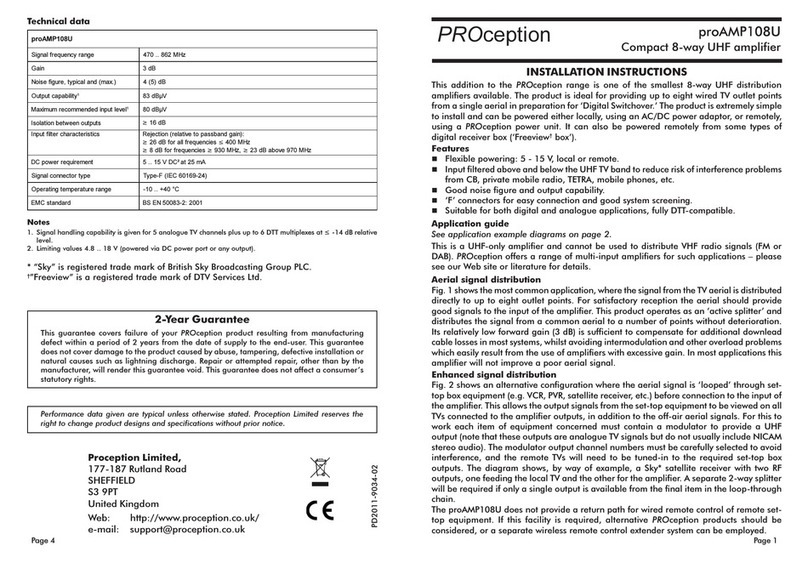
PROception
PROception proAMP108U User manual
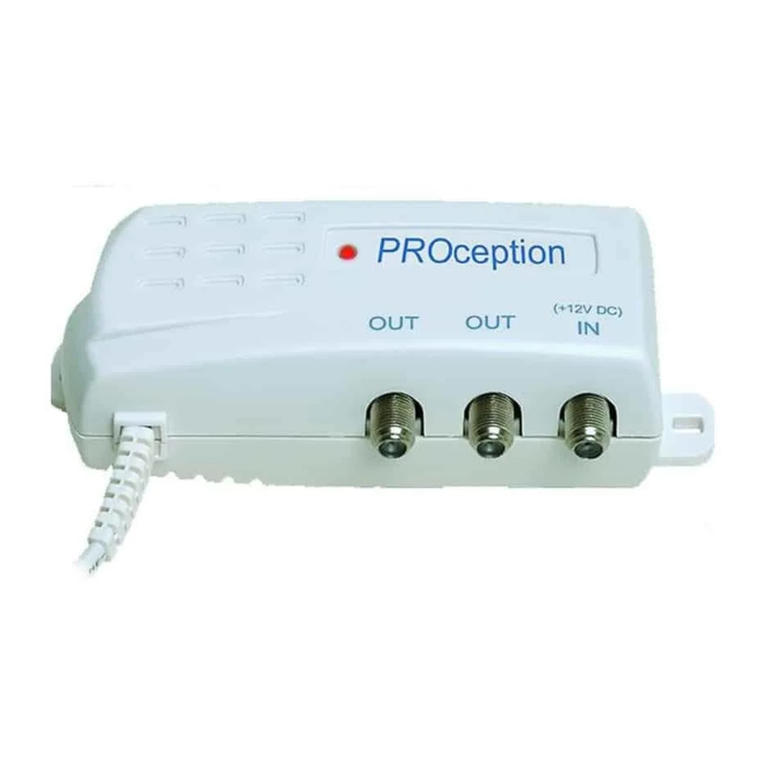
PROception
PROception proAMP11 User manual
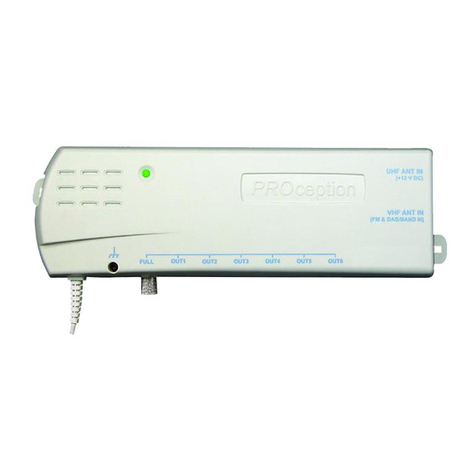
PROception
PROception proAMP24 User manual
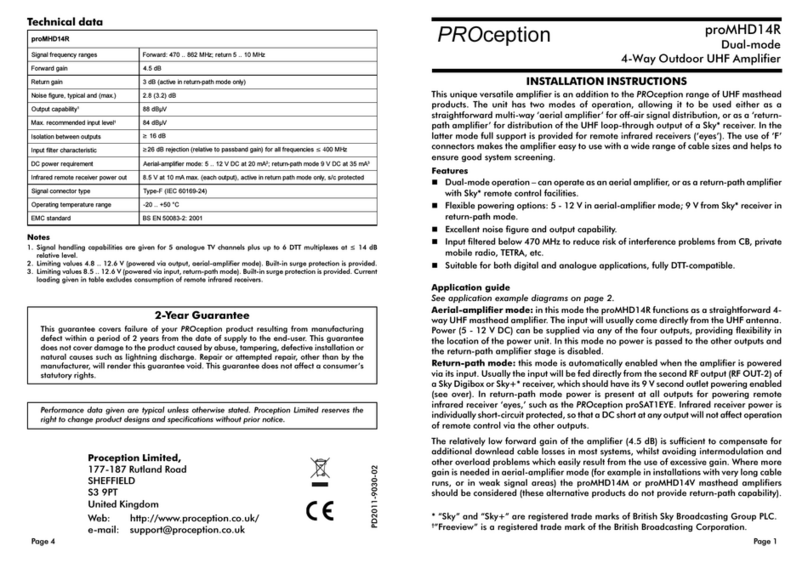
PROception
PROception proMHD14R Operation and maintenance manual
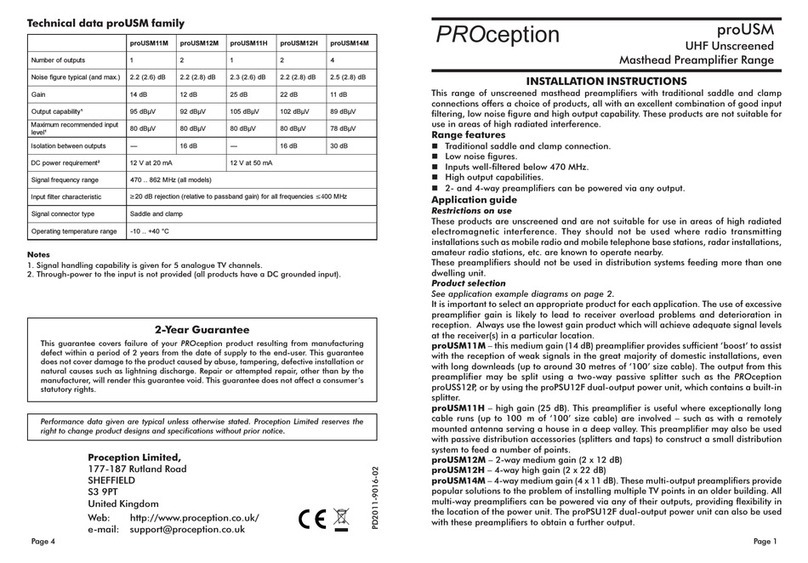
PROception
PROception proUSM Series User manual
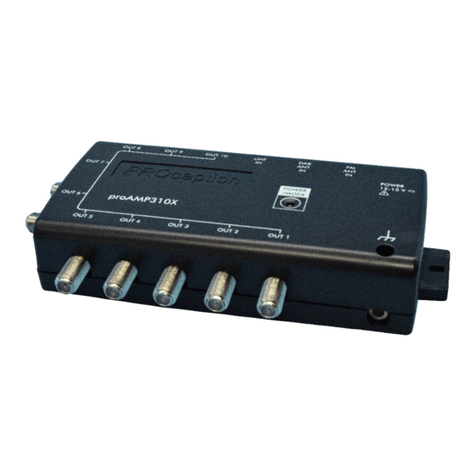
PROception
PROception proAMP310X User manual

PROception
PROception PROAMP24 User manual

PROception
PROception proAMP11 User manual

PROception
PROception PROAMP11 User manual
